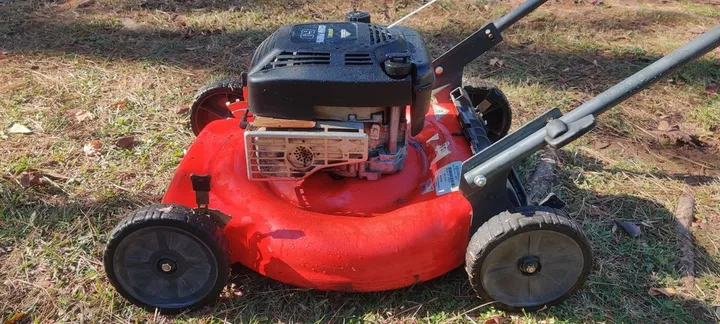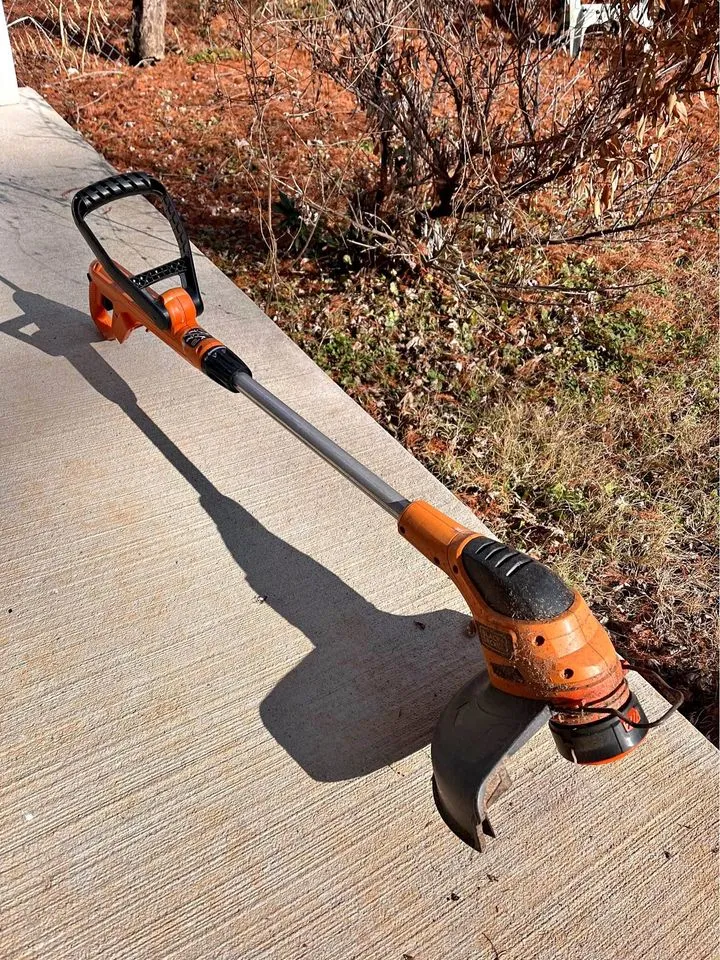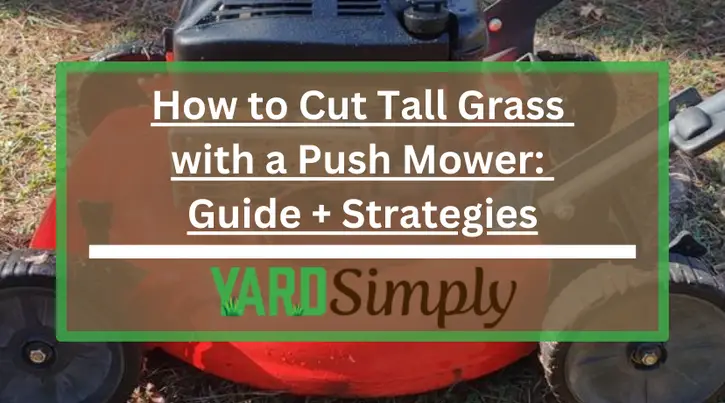As a seasoned lawn care expert with years of experience in maintaining and transforming outdoor spaces, I understand the challenges homeowners face with overgrown yards.
My expertise lies in effective lawn management techniques, particularly in cutting tall grass using a push mower. In this article, I’ll share my knowledge and practical tips on how to efficiently tackle tall, thick grass.
My approach is based on tried-and-tested methods that prioritize lawn health and equipment care.
If you’re grappling with a mini-jungle in your backyard, read on to learn how to transform it into a well-manicured lawn, drawing from my extensive experience in lawn maintenance.
Quick Summary
- To effectively cut tall grass with a push mower, adjust the machine to its highest setting, use a string trimmer for the top layer, and follow a methodical approach.
- Proper equipment maintenance, including sharpening blades and removing debris, is essential for a smooth mowing experience.
- Regularly maintained lawns require less effort to mow, even when grass is slightly taller than usual.
- In my experience, tackling tall grass with a push mower is a rewarding challenge that enhances both the health and appearance of your lawn.
Guide to Cutting Tall Grass Step by Step
Before I tackle the challenge of trimming long grass, I make sure my push mower is in tip-top shape.
I’ll give the area a quick scan to clear any hidden debris that might hinder my progress.
Then, I’ll use a string trimmer to take off the top layer of grass, setting the stage for an even cut with the mower.
Equipment Preparation for Effective Mowing
Ensuring your push mower’s blades are sharp and the equipment is in good working order is crucial for effectively tackling tall grass. Before I even consider starting, I prioritize equipment maintenance.
I check that I’ve made the right mower selection, ensuring it’s well-suited for the job at hand.
Blade sharpening is next; dull blades will only tear the grass, leading to an uneven cut and potentially harming the lawn.
I also review personal safety measures—wearing protective eyewear and sturdy shoes is a must.
Finally, I plan my mowing patterns. I aim to cut in sections, going over the grass in manageable swaths to avoid clogging the mower.
With these steps, I’m ready to face even the tallest of grasses with confidence.
Surveying the Lawn for Potential Obstacles
I carefully inspect the tall grass for hidden obstacles such as rocks, sticks, and debris to prevent damage to my mower and ensure a smooth cutting process.
Grass inspection is a critical step before mowing; it’s not just about avoiding a jarring stop mid-mow or a bent blade. It’s also a safety precaution.
By thoroughly conducting obstacle identification, I minimize the risk of projectiles that could harm me or others nearby.
As I comb through the area, I’m mindful of wildlife consideration, gently encouraging any critters to move along.
Debris removal is the last step in my pre-mow routine. I make sure to clear away anything that could interfere, ensuring my push mower glides through the tall grass with ease.
Pre-Mowing: Trimming with a String Trimmer
Armed with a string trimmer, I tackle the top layer of tall grass to make the subsequent push mowing more manageable and efficient.
Before I start, I assess the grass height to determine the best cutting technique. I opt for a trimmer type that’s comfortable and powerful enough to handle the overgrown area.
Donning safety gear, including goggles and gloves, is a must to protect myself from flying debris.
With the trimmer at the ready, I use a sweeping motion to evenly cut the top third of the grass, which prevents clogging the mower later.
After trimming, I take a moment to clean the tool, adhering to maintenance tips like removing tangled grass from the spool, ensuring my equipment lasts longer and performs at its best for the next use.
Mowing the Lawn with a Push Mower

Having trimmed the top layer of grass, it’s now time to tackle the remaining height with a push mower. I start by setting the mower to the highest setting to avoid stressing the grass.
As I mow, I practice grass cycling, leaving the clippings on the lawn to decompose, providing natural lawn fertilization without extra chemicals. I’m mindful of the different grass types in my yard; some may need more frequent cuts than others.
Adjusting my watering schedule is crucial, especially after mowing. I ensure the lawn gets enough water to recover, but not too much to cause problems.
Seasonal care is also on my mind; I know that how I mow now lays the groundwork for a healthy lawn throughout the year.
Related: Best Push Mower for Rough Terrain
Edging and Cleanup
Once the main lawn area is mowed, it’s essential to give the edges a neat trim and clear away debris from paths and patios with a blower. I use specific grass edging techniques to ensure a crisp boundary between my lawn and garden beds.
With a steady hand and an edging tool, I follow the contours of my landscape, keeping edge maintenance practices in mind to prevent turf damage.
For debris removal strategy, I tackle the grass clippings and leaves that have scattered on hardscapes. I prefer to use a leaf blower to efficiently direct all the green waste to one area.
Clipping disposal methods vary, but I often opt for composting. My hardscape protection tips include blowing debris away gently to avoid any damage to surfaces.
Cleaning and Maintaining Your Equipment
After mowing and edging, it’s crucial to clean your lawn equipment to maintain its performance and longevity.
I always start with mower maintenance, ensuring the undercarriage is free from grass clippings, which could cause corrosion or clog the mechanism.
Blade sharpening is next on my list because a dull blade can damage grass, leading to a less healthy lawn.
I’ve learned that proper storage tips are key, so I make sure to keep my mower in a dry place to prevent rust.
When it comes to fuel choice, I use the recommended type for my mower to prevent build-up and ensure efficient operation.
Lastly, I clean and inspect my safety gear, as it’s vital for protecting me during lawn care tasks.
Strategies for Mowing Grass Over 3 Feet Tall
When tackling the daunting task of cutting grass that stands three feet or higher, it’s essential to adjust your push mower to its highest setting to prevent clogging and ensure an even cut.
I always consider mower choice crucial for this job; a robust, high-wheel mower can handle the grass height better.
I’ll wear my safety gear, including goggles and gloves, to protect myself from flying debris.
As I mow, I use specific cutting patterns—going in rows or a spiral—to systematically reduce the grass length.
Grass cycling, where clippings are left to decompose, isn’t ideal here due to the volume, so I’ll rake and remove the clippings to maintain a tidy lawn.
Slow and steady, I’ll get this jungle under control.
Choosing and Using a Trimmer Mower

For overgrown lawns where a push mower might struggle, I’ll switch to a trimmer mower designed to slice through long grass with ease.
Trimmer maintenance is crucial; I always check the blades before starting, ensuring they’re sharp and secure for efficient cutting. Adhering to safety precautions, I wear protective gear and keep my feet clear of the blade path.
When it comes to blade selection, I choose one that matches the toughness of the grass I’m cutting. My techniques involve overlapping passes for a uniform cut and adjusting the cutting height to avoid scalping.
Lastly, I consider fuel options for my trimmer mower, opting for clean-burning alternatives when available, to reduce emissions and keep my machine running smoothly.
Second and Third Mowing Passes
When dealing with tall grass, it’s advised to make multiple mowing passes. After the initial cut, reduce the mower’s blade height for a second pass. This approach ensures a more even cut.
A third pass might be necessary, particularly for very tall grass. Change the mowing direction for this pass (e.g., if you first mowed horizontally, now mow vertically). This helps distribute the grass clippings evenly.
These multiple passes are not only for aesthetic reasons but also help in mulching the grass, which can act as a natural fertilizer for your lawn.
Cutting Tall Grass with Embedded Brush
When it’s time to tackle tall grass with brush entangled within, I need to consider a more robust approach than a standard push mower. That’s where a field and brush mower comes into play; it’s designed to handle such challenging conditions.
I’ll focus on how this specialized equipment can make the job more manageable and efficient.
Use of Alternative Hand Tools
In some cases, hand tools like scythes, garden sickles, and shears can be more effective for initial trimming of tall grass. These are especially useful for areas where using a mower is impractical or for the initial reduction of grass height.
A scythe is ideal for cutting grass up to 2 feet tall, while shears are better for smaller, more precise cuts. The sickle is suitable for back-handed strokes to move the blade away from your body, offering a safe and efficient way to trim grass.
Utilizing a Field and Brush Mower
Tackling dense undergrowth and tall grass often calls for the robust capabilities of a field and brush mower. I’ve found that regular brush maintenance is key to keeping this powerful tool in top condition.
Before I start, I always suit up in safety gear, including sturdy boots, gloves, and eye protection. This isn’t your typical push mower scenario; terrain challenges like uneven ground and hidden obstacles demand my full attention.
There are several mower types designed for this kind of work, but I prefer one with strong cutting techniques that can handle both grass and brush with ease.
I move methodically, adjusting the cutting height as needed, and always keep a sharp eye out for hidden threats that could jam or damage the mower.
Advanced Mowers for Extremely Tall Grass and Brush
For extremely tall grass (3 feet or higher) or lawns with brush, consider using a trimmer mower or a field and brush mower. These are more robust than standard mowers and can handle dense undergrowth and tall grass efficiently.
Trimmer mowers use a higher mass line and stronger engines, suitable for cutting without the grass having to pass under a deck.
Field and brush mowers combine the features of a self-propelled lawn mower and a bush hog, using a high mass blade and strong engine for cutting through thick brush.
These advanced mowers are particularly useful for reclaiming overgrown land or maintaining pastures that are inaccessible to larger machinery.
Mowing Stages
Pre-Mowing Preparation and Lawn Assessment
Before mowing, conduct a thorough assessment of your lawn. Look for thick, tall, or uneven grass patches, and remove any debris that could damage the mower’s blades.
Mark areas where the grass is especially dense to avoid overloading the motor. Removing debris and obstacles not only protects the mower but also ensures a smoother cutting process.
If areas of the lawn are very uneven or have taller grass, consider using a scythe or trimmer to reduce the height before mowing with a push mower. This preparation step can significantly ease the mowing process.
Post-Mowing Lawn Care
After mowing, focus on post-mowing lawn care to maintain a healthy lawn. This includes keeping the grass at the right height, which varies depending on the grass type but generally means not cutting more than one-third of the grass blade at once.
Regular mowing not only keeps the lawn looking neat but also promotes stronger, healthier grass growth, making the lawn more resistant to pests and diseases.
Post-mowing care also involves proper hydration and, if necessary, the application of lawn treatments to ensure the grass recovers from the stress of mowing.
Our Verdict
In my journey through the thickets of tall grass with just a good push mower, I’ve discovered that with the right strategy and tools, even the most daunting lawns can be tamed.
I adjusted my mower to its highest setting to prevent clogging and took my time with multiple passes, ensuring a uniform trim. My experience proved that a well-maintained lawn is easier to manage, even when it occasionally grows a bit wild.
Using a string trimmer for the top layer and clearing the area of obstacles beforehand were game changers. It’s not just about mowing; it’s about preparing and finishing with care.
Whether it was edging the lawn, cleaning up afterwards, or taking care of my equipment, each step contributed to the satisfying result.
And let’s not forget the eco-friendly aspect! Opting for grass cycling was not only good for the lawn but also aligned with my sustainability values.
In conclusion, cutting tall grass with a push mower might seem like a Herculean task, but with patience, persistence, and the right approach, it’s definitely achievable. My lawn is a testament to that, and I believe yours can be too.
Frequently Asked Questions
What safety gear should I wear when cutting tall grass with a push mower?
I’ll need sturdy boots, gloves, and goggles as personal protective equipment. Considering grass height limits, terrain, and mower blade sharpness, I’ll devise a mowing pattern strategy to tackle the job safely.
Can I use a push mower on wet tall grass, or should I wait for it to dry?
I’d wait for dry conditions since wet grass ups the mower clogging risk. Proper height adjustment and sharp blades are crucial, and remember, dry clipping mulching benefits the lawn more than when wet.
How should I dispose of or recycle the tall grass clippings after mowing?
I’m considering grasscycling benefits, composting options, and mulching gardens. I’ll also check local regulations and explore community sharing programs to ensure I dispose of my grass clippings responsibly and sustainably.
Are there any eco-friendly push mowers particularly effective for tall grass?
I’ve found that eco-friendly reel mowers, with sharp blades and proper mowing patterns, can effectively tackle tall grass. Their grass height limits vary, so choosing the right manual mower type is crucial.
What maintenance should be performed on a push mower after cutting very tall grass?
After mowing, I’ll sharpen the blade, check the oil, clean the air filter, inspect the spark plug, and scrub the undercarriage. Regular maintenance ensures my mower’s longevity and peak performance.


